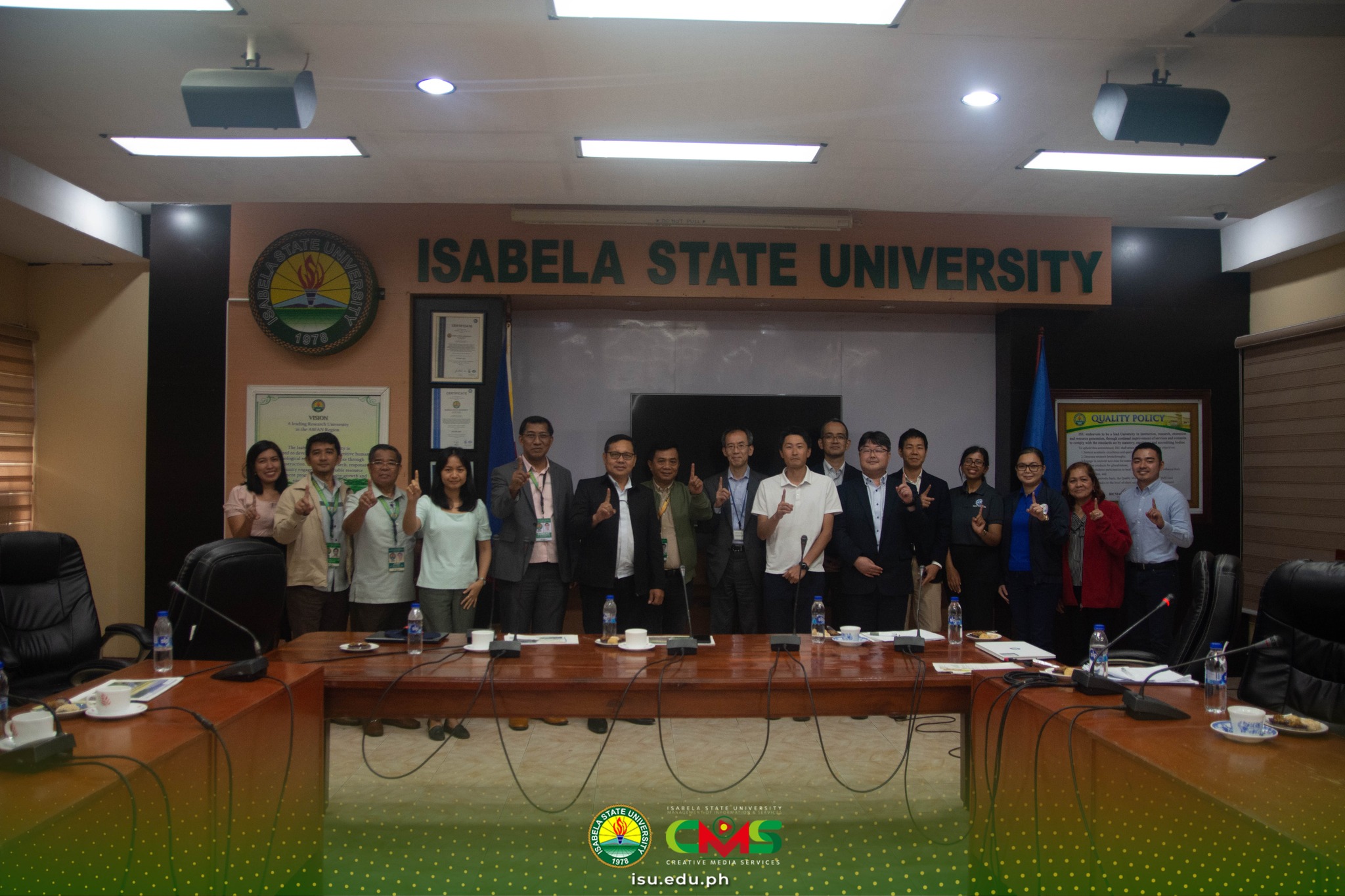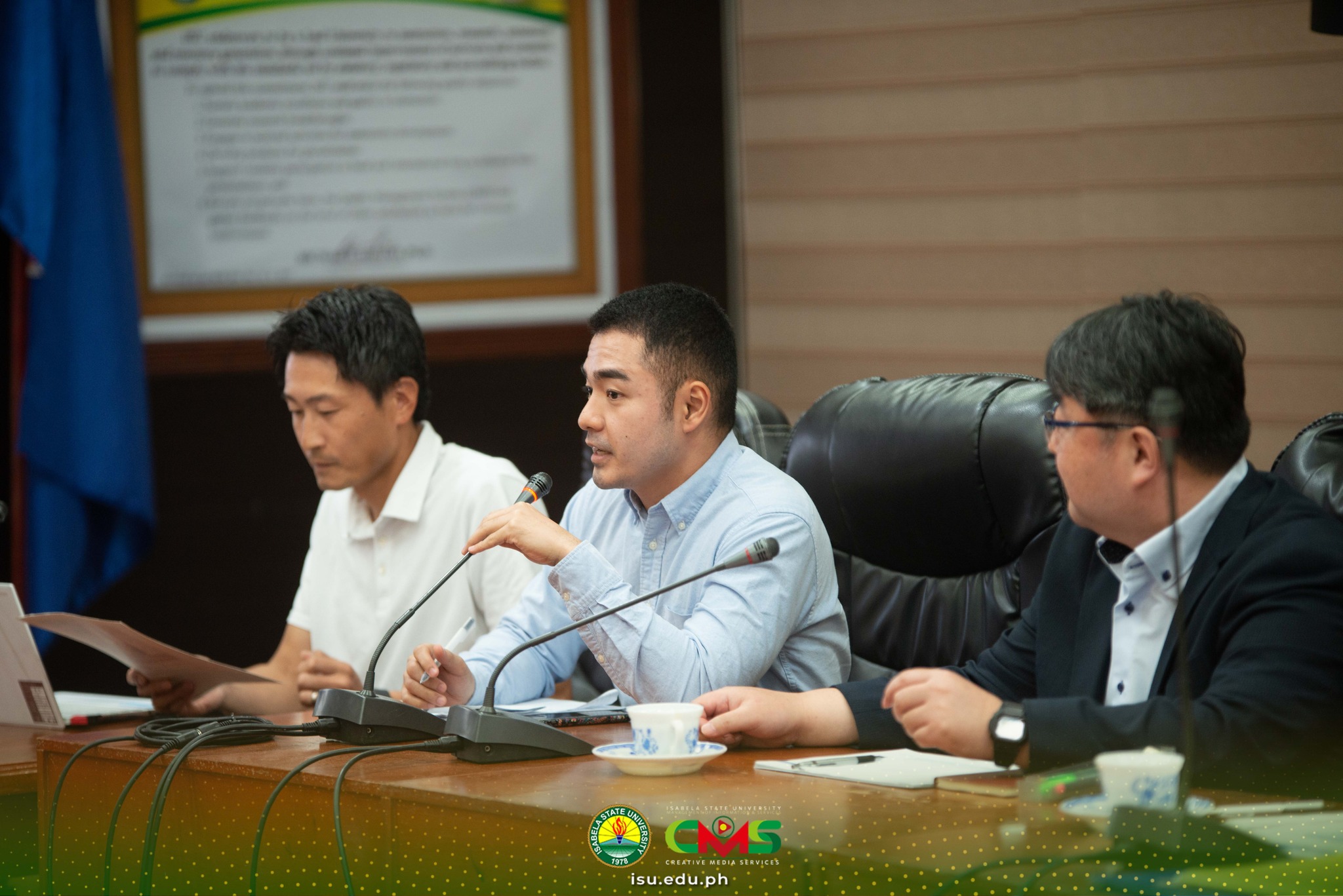
The Smart Water Infrastructure Management (SWIM) Program of Isabela State University continues to garner widespread recognition across ASEAN nations as its R&D endeavors persist in advancing water management solutions.
Top executives from the Japan Water Agency (JWA) Ministry of Land, Infrastructure, Transport and Tourism (MLIT), and Japan International Cooperation Agency (JICA) sought consultation with ISU’s leading water experts regarding their feasibility study on sedimentation countermeasures in Magat Dam on November 30, 2023, at the University’s Administration Building.

Initially, Dr. Hatano Keisuki, Assistant Director for Foreign Affairs Division of JWA, provided an overview of their aforementioned project including the need for a feasibility study for the proposal’s approval. Specifically, he underscored the critical sedimentation-related issues affecting water storage capacity and power generation intake in Magat Dam, thereby emphasizing the urgency for implementing effective sedimentation countermeasures.
In the course of the consultation, Dr. Ricmar P. Aquino, ISU President, suggested fast-
tracking the timeline of the feasibility study as the impending danger of sedimentation in Magat Dam is projected to manifest by 2026.
On the other hand, Dr. Orlando F. Balderama, Vice President for Research and Development, Extension and Training, informed the Japanese officials about the University’s R&D efforts in advancing integrated water resources management in the region.
He accentuated the massive data and developed S&T models that his SWIM program team with Kyoto University could offer to the Japanese
directors such as more recent bathymetric survey data, dam discharge protocol using Rainfall-Runoff Inundation as hydrodynamics model, local designs of Sabo dams, and other flood and sediment modeling software such as SWAT, WEAP, and TELEMAC.
Furthermore, Dr. Lanie A. Alejo, Director of the Water Research and Development Center, provided insights about her upcoming SEDI project which aligns with the concerns of the Japanese executives on comprehensive sediment management.

Also, Dr. Jeoffrey Lloyd Bareng, University Director for R&D, offered to provide results from their riverbed material survey research. Additional topics also emerged from the consultation such as other options on sediment countermeasures (i.e., flushing gate, hydrosuction, and sediment bypass), procurement of more turbidity meters, and subbasin assessment as basis for reforestation.
By and large, both parties agreed to solidify their collaboration through an official Memorandum of Understanding for ISU to share their information and research project outputs to Japanese executives as additional beneficiaries of the University’s impactful R&D ventures.
ISU-UMIS-CMS with Dr. Jennelyn L. Raymundo, Communication Specialist, ISU-SWIM Center




